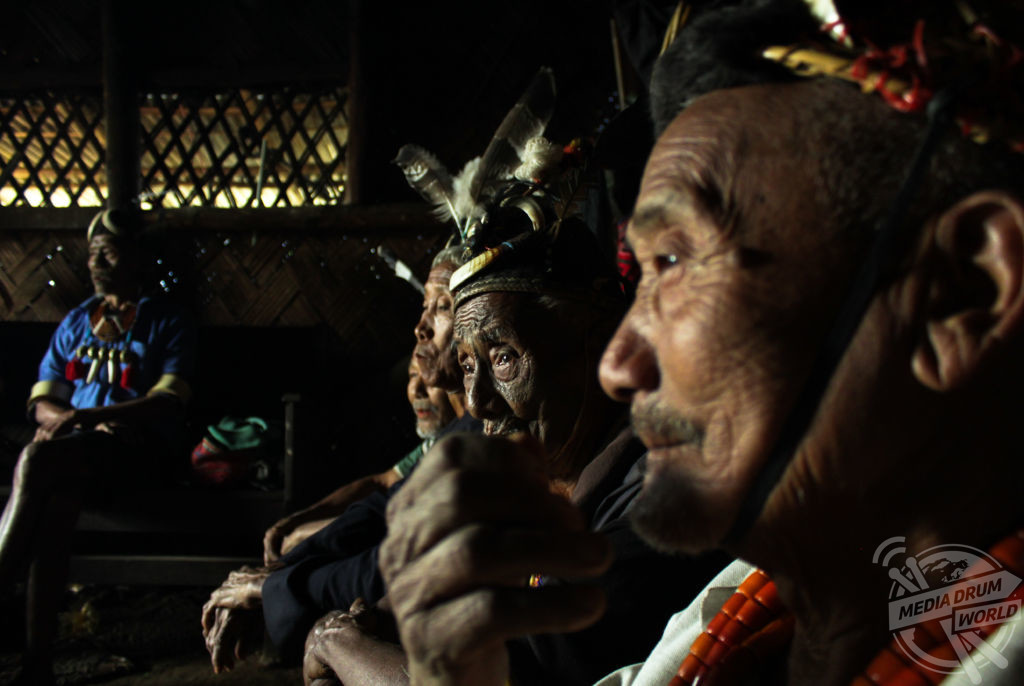
By Alex Jones
REMARKABLE photos capture the few remaining members of the Konyak Tribe – a much feared group of warriors who used to decapitate their victims and parade their bloodied skulls around as a gruesome rite of passage.
Stunning images show frail tribesmen proudly sporting bone jewellery, crafted from the remains of vanquished animals; elderly natives with imposing facial tattoos which mark their prowess on the battlefield; and the remaining members of this vanishing tribe deep in discussion around an open fire.
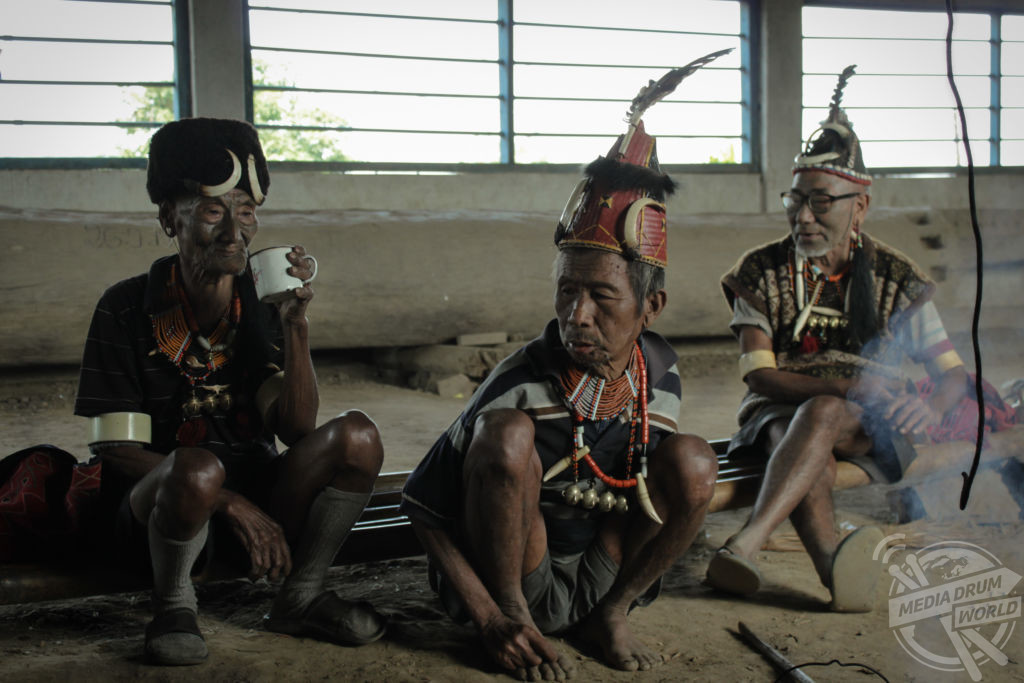
The striking shots were taken by Polish model/photographer Wiktor Stadniczenko who travelled deep into mountainous region of Nagaland in north east India to meet and drink tea with the last of the headhunters.
Many of the tribespeople are over the age of 80 with the oldest resident born in 1914, just as Britain was entering into The Great War. The tradition of ‘headhunting’ has long since ceased with a vast proportion of the village’s community now practising Christianity and embracing modern values.
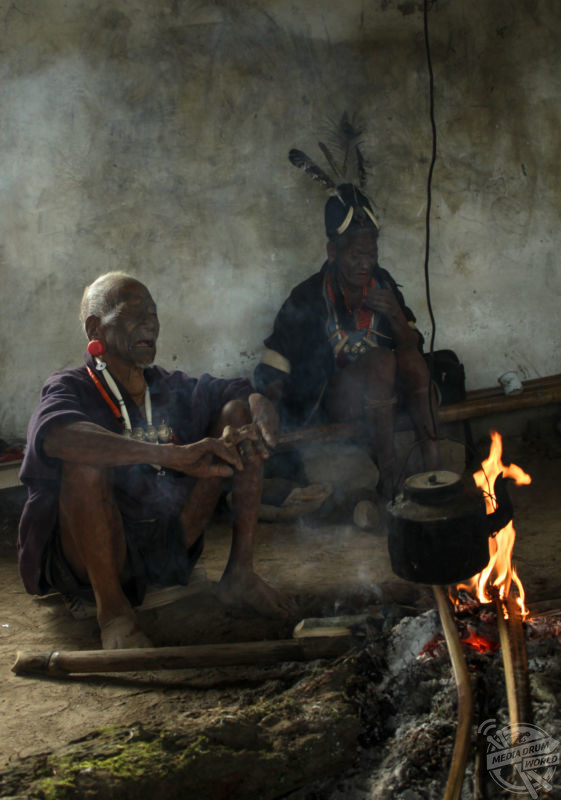
However reminders of the tribe’s dark history are everywhere. In Nagaland, the body is treated as a canvas, with inscriptions marked on the skin to represent rites of passage or, for some, to mark every kill they made. Many of the older men sport chilling facial and body tattoos which were traditionally awarded when the head of an enemy warrior was severed or a significant kill was made.
The tradition of headhunting continued well into the 1960s, even after it was banned by the Indian Government. Of the many tribes in this tropical region of India, the Konyak were amongst the most feared and most dangerous. Even today some of the geriatric tribesmen carry the knives with which they used to hunt.
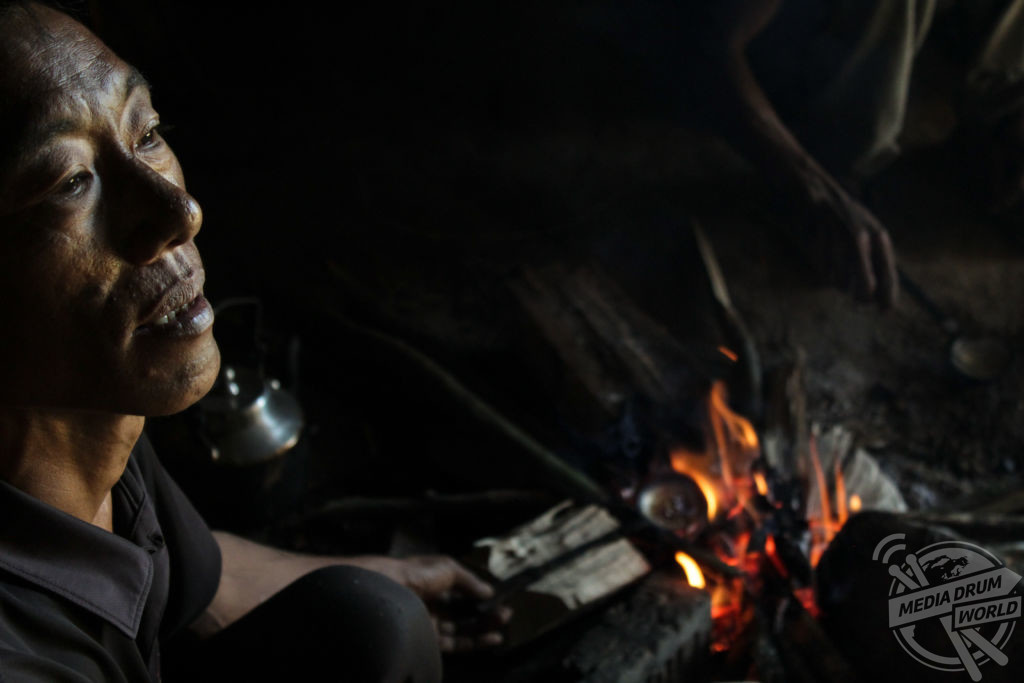
“The Konyak tribe believed that a human skull contained some type of magical power and if you took an enemy’s skull as a trophy, you would gain some of its power and soul,” explained Wiktor, 28.
“Huge admiration was granted to a warrior who entered the village with the captured head of the enemy. Residents of the village gave a ceremonial reception to the huntsmen. The skull was then tied to the sacred ritual tree at the entrance to each village, and the tribe danced and performed night rituals by light of the bonfire until morning. It was a defining part of their culture.”
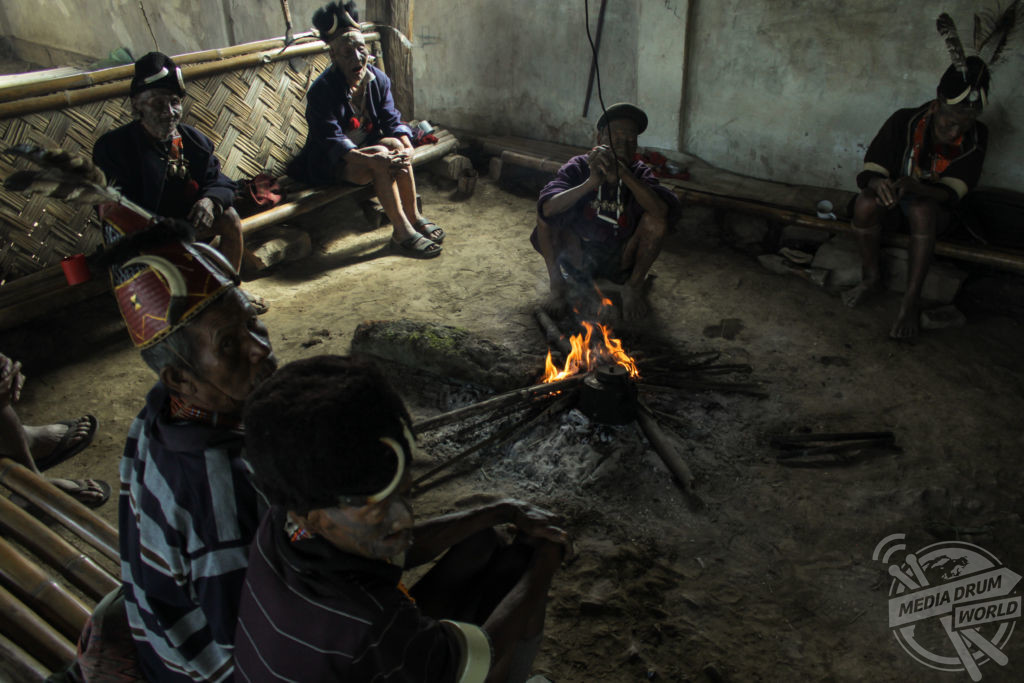
Those brutal warriors who collected a head were allowed to wear a bronze skull on a necklace to demonstrate their kill. Some of the men Wiktor met had as many as three or four skulls resting on their chest.
The murderous days of headhunting are not often spoken about today by the tribesmen, with some expressing remorse for their horrendous practices. However, that is not the case for all. According to Wiktor, if you listen closely enough to the Konyak huntsmen as they drink black tea and rum and sit around an open fire swapping stories, you can still hear a lusting for the blood and turmoil of yesteryear.




